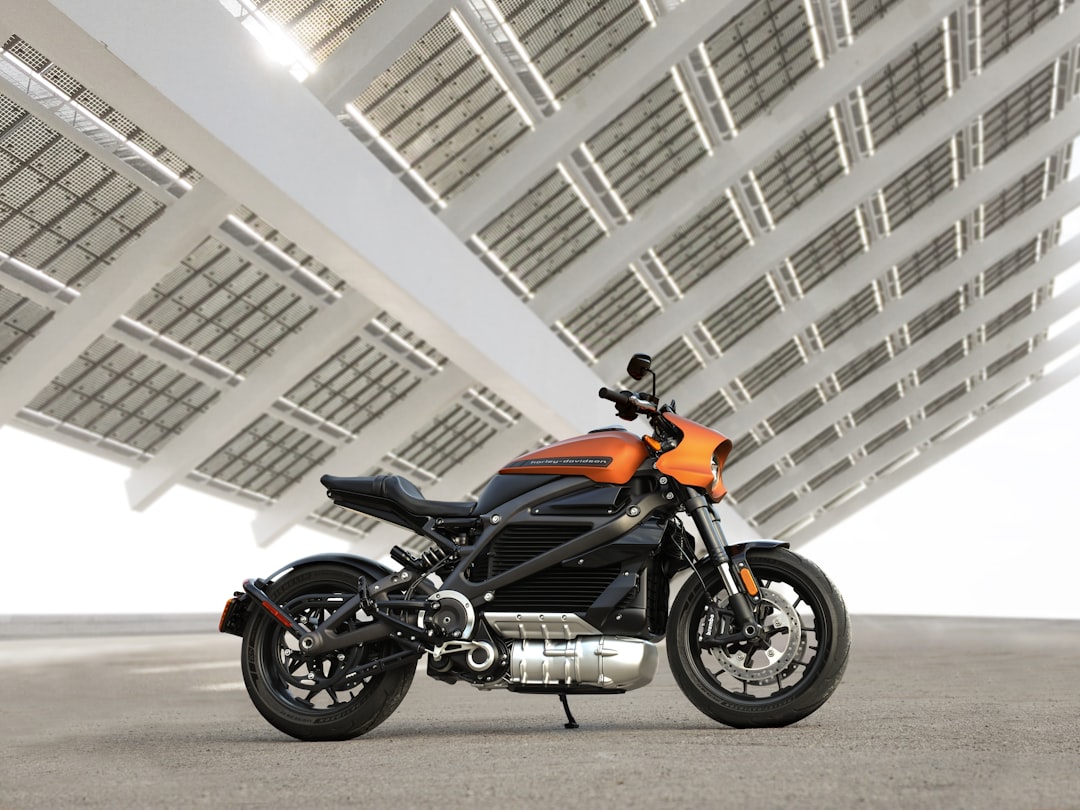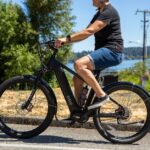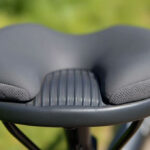Ebike Safety is crucial, especially given the faster speeds and greater distances these bikes can travel. E-Bikes have transformed the way we commute and explore. Class III E-Bikes, which can reach up to 28 MPH, offer incredible efficiency and excitement but require a strong emphasis on safety to ensure enjoyable and accident-free rides.
Here are the key points for maintaining Ebike safety:
- Always wear an approved helmet.
- Know and follow the vehicle code and local regulations.
- Understand the rules specific to E-Bikes in your area.
- Perform a “pre-flight” check on your E-Bike before you ride.
- Take extra care before riding at night.

Adhering to these basic principles can significantly boost your safety on the road. Let’s dig deeper into each of these vital safety tips and how you can make your Ebike experience both thrilling and secure.
Always Wear an Approved Helmet
Wearing a helmet is the single most important thing you can do to protect yourself while riding an E-Bike. Helmets reduce the risk of serious head injuries, including concussions and traumatic brain injuries, which can occur during accidents.
Why Helmets Matter
E-Bikes can travel at higher speeds than traditional bicycles, making accidents potentially more severe. Even if you’re an experienced rider, unexpected obstacles or sudden stops can lead to falls. A helmet acts as your first line of defense against head injuries.
Legal Requirements
In many states, wearing a helmet while riding an E-Bike is not just a good idea—it’s the law. These regulations often vary depending on the rider’s age and the type of E-Bike. Before you ride, check your local laws to ensure you’re in compliance.
Modern Helmet Technology: MIPS
Today’s helmets are more advanced and comfortable than ever. One technology to look out for is MIPS (Multi-directional Impact Protection System). MIPS helmets are designed to reduce rotational forces on the brain during an impact, which can lower the risk of concussions and other brain injuries.
Real-World Impact
According to a report by the U.S. Consumer Product Safety Commission, injuries from E-Bikes and other micro-mobility devices surged by 21% in just one year. Fractures and head injuries are among the most common, making helmet use even more critical.
Choosing the Right Helmet
When selecting a helmet, ensure it meets safety standards and fits snugly on your head. Look for features like adequate ventilation, lightweight materials, and the MIPS logo for added protection.
Remember: No helmet can prevent all injuries, but wearing one significantly increases your odds of a safer ride.
By prioritizing helmet use, you take a crucial step in safeguarding yourself against the risks associated with higher-speed E-Bike riding.
Next, we’ll explore how knowing and following the vehicle code can further improve your safety on the road.
Know and Follow the Vehicle Code
When you ride an E-Bike on streets and roads, you are considered a vehicle in the eyes of the law. This means you must follow the same rules and regulations as cars. Knowing and following the vehicle code can make your ride safer and more predictable.
Stop Signs and Red Lights
Just like cars, E-Bikes must stop at all stop signs and red lights. Running a red light or stop sign isn’t just illegal—it’s dangerous. Always come to a full stop, look both ways, and proceed only when it is safe.
Appropriate Lanes
Ride in the appropriate lanes for your E-Bike. Use bike lanes where available, and if you must ride on the road, stay as far to the right as possible. Avoid riding on sidewalks unless it’s legally permitted and safe to do so.
Yielding the Right of Way
Yield to pedestrians and other vehicles when you do not have the right of way. This includes yielding at crosswalks and intersections. Being courteous and following right-of-way rules helps prevent accidents.
Turn Signals and Hand Signals
Use turn signals or hand signals to indicate your intentions. This helps drivers and other riders know what you plan to do. For example, extend your left arm to signal a left turn, and your right arm to signal a right turn.
Lights in Dim Conditions
Visibility is key for safety, especially in dim or dark conditions. Make sure your E-Bike is equipped with front and rear lights. Use them whenever visibility is low to make sure you’re seen by others on the road.
Ride Predictably
Ride in a straight line and avoid sudden stops or swerves. Predictable riding makes it easier for drivers and other riders to anticipate your movements, reducing the risk of collisions.
By adhering to these vehicle code guidelines, you can significantly reduce the risk of accidents and enjoy a safer ride. Next, let’s dig into understanding the specific rules for E-Bikes in your area.
Understand the Rules for E-Bikes in Your Area
Understanding the specific rules for E-Bikes in your area is crucial for Ebike Safety. E-Bikes are subject to various regulations, which can differ depending on where you live. Here are some key points to consider:
E-Bike Model Legislation
Most states have adopted model legislation that classifies E-Bikes into three categories:
- Class I: Pedal-assist only, with a maximum assisted speed of 20 MPH.
- Class II: Throttle-assist, with a maximum speed of 20 MPH.
- Class III: Pedal-assist only, with a maximum assisted speed of 28 MPH.
Knowing your E-Bike’s class helps you understand where and how you can legally ride it.
Minimum Ages
Different states have different age requirements for riding E-Bikes. For example, some states might require riders to be at least 16 years old to operate a Class III E-Bike. Always check your local laws to ensure compliance.
Helmet Requirements
Helmet laws can vary widely. Some states mandate helmet use for all E-Bike riders, while others may only require them for younger riders or specific E-Bike classes. Regardless of legal requirements, wearing a helmet is always a good idea for safety.
Trail Access Restrictions
Not all trails are open to E-Bikes. Many places classify electric bikes as motorized vehicles, which can restrict their access to traditional bike trails. The Forest Service, Bureau of Land Management, and National Park Service often prohibit E-Bikes on natural surface trails that do not allow motorized vehicles.
E-Bike Class Sticker
Reputable E-Bikes come with a sticker showing the E-Bike class, top speed, and motor wattage output. This sticker is often required by law and helps law enforcement and trail managers quickly identify your E-Bike’s classification. If your E-Bike lacks this sticker, it may not comply with local regulations.

Local Variations
It’s essential to review the specific rules in your city or state. For instance, New York City has stringent regulations due to safety concerns, while other areas may have more lenient rules. Ignorance of local laws can lead to fines or other penalties.
By taking the time to understand and follow these regulations, you ensure not only your safety but also the safety of others. Next, let’s look at how to perform a “pre-flight” check on your E-Bike before you ride.
Perform a “Pre-Flight” Check on Your E-Bike Before You Ride
Before you head out, it’s crucial to perform a “pre-flight” check on your E-Bike. This ensures everything is in good working order and helps prevent accidents. Here’s what you need to do:
Regular Maintenance
E-Bikes need regular maintenance to stay in good condition. Just like a car, your E-Bike has parts that wear out and need attention. Regularly check your owner’s manual for specific maintenance steps for your model.
Tire Pressure
All bicycle tires lose air over time. Check the tire pressure and make sure they’re inflated to the recommended level, which you can find on the sidewall of the tire. Underinflated tires can make your ride less efficient and more prone to flats. Use a tire gauge to check the PSI before every ride.
Brake Check
Squeeze each brake lever while rolling the bike forward and backward. The brakes should engage and stop the bike before the lever touches the handlebar. If the brakes feel weak or the lever pulls all the way back, they need adjustment.
Wheel Attachment
Ensure your wheels are firmly attached to the frame. Depending on your model, this might involve checking axle nuts, a quick release lever, or a thru-axle. Loose wheels can cause serious accidents. If you have a quick release lever, make sure it’s tight and properly closed.
Handlebar Stability
Stand in front of the bike with the front tire between your knees. Try to twist the handlebar left and right while holding the tire steady. The handlebar and stem should not move independently from the tire. If they do, tighten the bolts.
Rattles or Vibrations
Pick up the bike 1-2 inches from the ground and drop it. Listen for any unusual rattles or vibrations. These could indicate something loose that needs tightening. If you hear anything odd, inspect the bike thoroughly to find the source.
Owner’s Manual
Your owner’s manual is a valuable resource. It contains specific instructions and safety checks custom to your E-Bike model. Always refer to it for detailed maintenance steps and follow its recommendations.
Performing these checks before every ride ensures your E-Bike is safe and ready to go. Neglecting these steps can lead to accidents or equipment failure, so make them a habit. Next, let’s discuss the extra care needed before riding at night.
Take Extra Care Before You Decide to Ride at Night
Riding your E-Bike at night can be thrilling, but it also comes with added risks. Visibility is lower, and obstacles are harder to see. Here’s how to stay safe when the sun goes down:
Night Riding Dangers
Riding at night is more dangerous than daytime riding. It’s harder for others to see you, and it’s harder for you to see obstacles. This increases the risk of accidents. According to Dr. Vishal Bansal, trauma surgeon at Scripps Mercy Hospital San Diego, night riding requires extra caution to avoid injuries.
Visibility
To stay safe, you need to be visible. Equip your E-Bike with bright lights. Use a front light to illuminate your path and a rear light to alert others of your presence. Reflective tape on your bike and clothing can also make you more visible to cars and other cyclists.
Modern Bicycle Lights
Modern bicycle lights are powerful, lightweight, and have longer runtimes than ever before. Invest in good-quality lights that can last through your entire ride. For example, many riders in hot climates like Phoenix, Arizona, prefer night rides to avoid the heat. Longer-lasting lights make these rides safer.
Cooler Temperatures
One advantage of night riding is cooler temperatures. This can make your ride more comfortable, especially during hot summer months. However, don’t let the cooler weather make you complacent. Always stay alert and prepared for any situation.
Safety Tips
- Wear bright clothing: Even with lights, bright or reflective clothing makes you more visible.
- Use a bell or horn: This helps you alert pedestrians and other cyclists of your presence.
- Ride in well-lit areas: Stick to streets and paths that are well-lit to minimize the risk of unseen obstacles.
- Plan your route: Know your route before you set off to avoid getting lost or ending up in poorly lit areas.
By taking these precautions, you can enjoy the benefits of night riding while staying safe. Visibility is key, and modern lights can make a big difference. Next, let’s talk about why carrying passengers on an E-Bike designed for a single rider is dangerous.
Don’t Carry Passengers if Your E-Bike Isn’t Designed for It
Carrying passengers on an E-Bike designed for a single rider is risky and can lead to accidents. Here’s why:
Single Rider Design
Most E-Bikes are designed for one person. This means the bike’s balance, weight distribution, and control are optimized for a single rider. Adding an extra passenger changes how the bike handles, making it harder to control.
Weight Handling
Each E-Bike has a maximum weight limit. This includes the rider, any cargo, and the bike itself. Exceeding this limit can strain the frame, tires, and brakes. It can also make the bike unstable, increasing the risk of accidents.
Stopping Distance
With more weight, your E-Bike takes longer to stop. This increased stopping distance can be dangerous, especially in emergencies. Imagine trying to stop suddenly with an extra person on board—you might not be able to stop in time to avoid a collision.
Maximum Weight Limits
Check your E-Bike’s manual for its weight limit. Exceeding this limit can void warranties and make your bike unsafe. For example, if your bike is rated for 250 pounds and you and your passenger together weigh 300 pounds, you’re riding unsafely.
Tandems and Cargo Bikes
If you need to carry a passenger, opt for an E-Bike designed for it. Tandem E-Bikes and cargo bikes are built to handle extra weight and have safety features like extended frames and stronger brakes. These bikes distribute weight more evenly, making them safer for carrying passengers.
Safety Tips
- Check weight limits: Always stay within your E-Bike’s weight limit.
- Use the right bike: Choose a tandem or cargo bike if you need to carry passengers.
- Practice riding: Get comfortable with the extra weight before hitting busy streets.
- Communicate: Make sure your passenger knows how to sit and hold on properly.
In summary, riding double on a single-rider E-Bike is unsafe. Always use the right type of bike for carrying passengers to ensure a safe and enjoyable ride.
Next, let’s discuss how to understand what actions will turn your E-Bike’s motor on.
Understand What Actions Will Turn Your E-Bike’s Motor On
Knowing what activates your E-Bike’s motor is crucial for Ebike Safety. It helps you avoid unexpected movements and potential accidents. Here’s what you need to know:
Motor Activation
Your E-Bike’s motor can turn on in a few different ways. Understanding these will help you stay in control.
-
Pedal Assist: Most E-Bikes have a pedal assist feature. When you start pedaling, the motor kicks in to help you. This can be great for hills but unexpected if you’re not ready for it.
-
Throttle Lever: Some E-Bikes come with a throttle lever or button. Pressing this can activate the motor without pedaling. Be mindful of this, especially when parking or walking your bike.
Unexpected Engagement
Unexpected motor engagement can be dangerous. Imagine you’re on a wet road or cornering with slippery leaves. If the motor suddenly kicks in, you could lose control.
-
Wet Roads: Wet roads reduce tire grip. If your motor turns on unexpectedly, it can cause your bike to slip. Always be cautious in these conditions.
-
Slippery Leaves: Leaves can be as slippery as ice. If you’re cornering and the motor engages, you might slide out. Keep your motor off or on a low assist level in such conditions.
Safety Tips
-
Know Your Bike: Spend time understanding how your specific E-Bike works. Read the manual and get familiar with the controls.
-
Power Down: When you don’t need assistance, set your E-Bike to pedal assist level 0 or turn it off entirely. This is especially important when parking or stopping.
-
Practice: Practice using your bike in a safe, open area. Get used to how the motor engages and how to control it.
-
Stay Alert: Always be aware of your surroundings. Anticipate when the motor might turn on and be ready to handle it.
In summary, understanding what actions will turn your E-Bike’s motor on helps you ride safely. Now, let’s move on to why you should power down when you don’t need assistance.
Power Down When You Don’t Need Assistance
Powering down your E-Bike when not in use is a simple but crucial step for Ebike Safety. It helps prevent accidental motor activation and keeps you in control.
Pedal Assist Level 0
One effective way to ensure your E-Bike doesn’t accidentally engage is to set it to pedal assist level 0. At this setting, the motor assistance is disabled, so even if you pedal, the motor won’t kick in. This is particularly useful when you’re:
- Stopping at a light
- Navigating through crowded areas
- Parking your bike
Turning Off the E-Bike
Another safety measure is to turn off the E-Bike entirely when it’s not in use. This reduces the risk of accidental throttle engagement. For instance, if you accidentally brush the throttle lever, the motor won’t turn on if the bike is powered down.
Parking Safety
When you park your E-Bike, always make sure it’s powered down. This simple habit can prevent unexpected motor activation. Imagine parking your bike and accidentally hitting the throttle. The bike could lurch forward, potentially causing damage or injury.
Accidental Throttle Engagement
Accidental throttle engagement is a common issue that can lead to accidents. Here’s how to avoid it:
- Power Down: Turn off the bike or set it to pedal assist level 0.
- Be Mindful: Always be cautious of where your hands and fingers are, especially near the throttle lever.
- Regular Checks: Ensure the throttle lever is functioning correctly and not sticking.
Habit Formation
Creating a habit of powering down your E-Bike can significantly improve your safety. Make it a routine to:
- Set to Pedal Assist Level 0: Before you stop or park, adjust the pedal assist.
- Turn Off the Bike: Power down the bike when you’re done riding.
- Double-Check: Always double-check that the bike is off before leaving it unattended.
Example: Think of it like turning off your car when you park. It’s a simple step but crucial for preventing accidents.
By powering down when you don’t need assistance, you minimize risks and improve your overall Ebike Safety. Next, let’s look at the built-in safety features you should consider when buying an E-Bike.
Buy an E-Bike with Built-In Safety Features
Choosing an E-Bike with built-in safety features is essential for a safe riding experience. Here are the key features to look for:
Motor-Interrupt Brake Levers
Motor-interrupt brake levers are a must-have. They automatically cut off the motor when you pull the brake levers. This is crucial during panic stops. Even if you’re still pedaling or holding down the throttle, the motor will shut off, reducing the risk of accidents.
Example: Imagine you’re riding at top speed and need to stop suddenly. The motor-interrupt brake levers will help you halt safely by instantly cutting off motor power.
Disc Brakes
Disc brakes provide the stopping power you need for an E-Bike. E-Bikes are heavier and faster, requiring more effective braking. Unlike traditional rim brakes, disc brakes are designed to handle the increased weight and speed.
Fact: Traditional caliper brakes don’t offer the same stopping power as disc brakes. For E-Bikes, disc brakes are essential to ensure you can stop quickly and safely.
Class I, II, III Sticker
Look for an E-Bike with a Class I, II, III sticker. This sticker indicates the E-Bike’s class, top speed, and motor wattage output. It’s a sign of a reputable manufacturer and ensures compliance with state regulations.
Statistic: Most states require E-Bikes to have this sticker. An unlabeled E-Bike could be cutting corners on safety and quality.
Reflectors
Reflectors are required by law and should be included with your E-Bike. They improve your visibility, especially in low-light conditions. Make sure your E-Bike has reflectors on the front, rear, and sides.
Tip: Reflectors are a simple but effective way to increase your visibility to other road users, reducing the risk of accidents.
Reputable E-Bikes
Always opt for a reputable E-Bike. Check for third-party safety certifications like the UL sticker, which indicates that the bike and its battery meet recognized safety standards.
Case Study: In New York City, new laws prohibit the sale of E-Bikes that don’t meet safety standards. This is in response to several incidents where low-quality batteries caused fires. Choosing a reputable E-Bike can help you avoid such risks.
By selecting an E-Bike with these built-in safety features, you can ride with greater confidence and security.
Next, let’s address some frequently asked questions about Ebike Safety.
Frequently Asked Questions about Ebike Safety
How Safe Are Electric Bikes?
Electric bikes, or E-Bikes, are generally safe when used correctly, but they do come with some risks. Studies based on hospital data show a rise in e-bike-related accidents. From 2017 to 2022, hospitals reported treating 53,200 e-bike injuries. In 2022 alone, almost half of these injuries occurred.
Fact: E-Bikes are heavier and faster than regular bikes, making them potentially more dangerous in crashes. They can reach speeds of up to 28 mph, especially Class III E-Bikes.
Statistic: The U.S. Consumer Product Safety Commission found that injuries from micromobility devices, including e-bikes, increased by 23% yearly from 2017 to 2022.
How to Be Safe on an Ebike?
Ebike Safety starts with proper education and preparation. Here are some key tips:
-
Wear a Helmet: Always wear a helmet to protect against head injuries. Modern helmets with MIPS technology can reduce the risk of concussion.
-
Follow the Vehicle Code: Stop at stop signs, use appropriate lanes, and signal your turns. Knowing and following local traffic laws is crucial.
-
Understand E-Bike Rules: Different states have different rules regarding age limits, helmet requirements, and where you can ride your e-bike.
-
Perform a Pre-Flight Check: Check your tires, brakes, and wheel attachments before each ride. This can prevent accidents caused by mechanical failures.
-
Night Riding: Use lights and reflectors to increase visibility. Modern bicycle lights have longer runtimes and are essential for riding in low-light conditions.
-
Passenger Safety: Don’t carry passengers if your e-bike isn’t designed for it. The added weight can affect handling and stopping distance.
What Are the Drawbacks of Electric Bikes?
While e-bikes offer many benefits, they also have some drawbacks:
-
High Cost: E-Bikes can be expensive to buy and maintain.
-
Weight: They are heavier than regular bikes, which can make them harder to handle and transport.
-
Handling: The added weight and speed can make them more challenging to control, especially for new riders.
-
Limited Range: Most e-bikes have a limited battery range, requiring frequent charging.
-
Safety Concerns: Issues like lithium-ion battery fires and mechanical failures can pose risks. In 2023, e-bike batteries caused 268 fires in New York City, resulting in 18 deaths and 150 injuries.
-
Theft Concerns: E-Bikes are a target for thieves due to their high value.
-
Legal Restrictions: Different states have varying regulations on where you can ride e-bikes and who can ride them.
-
Environmental Impact: While e-bikes are more eco-friendly than cars, the production and disposal of lithium-ion batteries can have environmental impacts.
By understanding these drawbacks and taking appropriate precautions, you can enjoy the benefits of e-bikes while minimizing the risks.
Next, let’s summarize the key points and discuss Doot Scoot’s commitment to Ebike Safety.
Conclusion
Ebike Safety is crucial for enjoying the benefits of electric bikes while minimizing risks. Let’s summarize the key safety tips:
-
Always Wear an Approved Helmet: Protect your head with a modern helmet, preferably with MIPS technology to reduce the risk of concussion.
-
Know and Follow the Vehicle Code: Treat your e-bike like any other vehicle. Stop at stop signs, use appropriate lanes, and signal your turns.
-
Understand the Rules for E-Bikes in Your Area: Different states have different rules regarding age limits, helmet requirements, and where you can ride.
-
Perform a “Pre-Flight” Check on Your E-Bike Before You Ride: Regular maintenance can prevent accidents caused by mechanical failures. Check your tires, brakes, and battery before each ride.
-
Take Extra Care Before You Decide to Ride at Night: Use lights and reflectors to increase visibility in low-light conditions.
-
Don’t Carry Passengers if Your E-Bike Isn’t Designed for It: Extra weight can affect handling and stopping distance.
-
Understand What Actions Will Turn Your E-Bike’s Motor On: Be mindful of how your bike’s motor engages, especially on wet or slippery surfaces.
-
Power Down When You Don’t Need Assistance: Turn off the pedal assist when it’s not needed to avoid accidental engagement.
-
Buy an E-Bike with Built-In Safety Features: Look for motor-interrupt brake levers, disc brakes, and proper reflectors.
Following these guidelines can significantly improve your safety while riding an e-bike.
Doot Scoot’s Commitment to Ebike Safety
At Doot Scoot, we are dedicated to promoting Ebike Safety. We believe that by educating our community and offering high-quality, safe e-bikes, we can make every ride a safe and enjoyable experience.
For more information on our e-bike offerings and the best deals, check out our service page.
Stay safe and happy riding!











